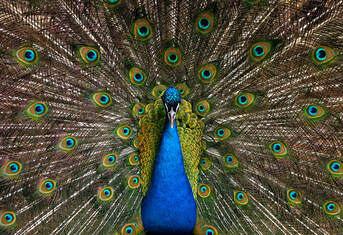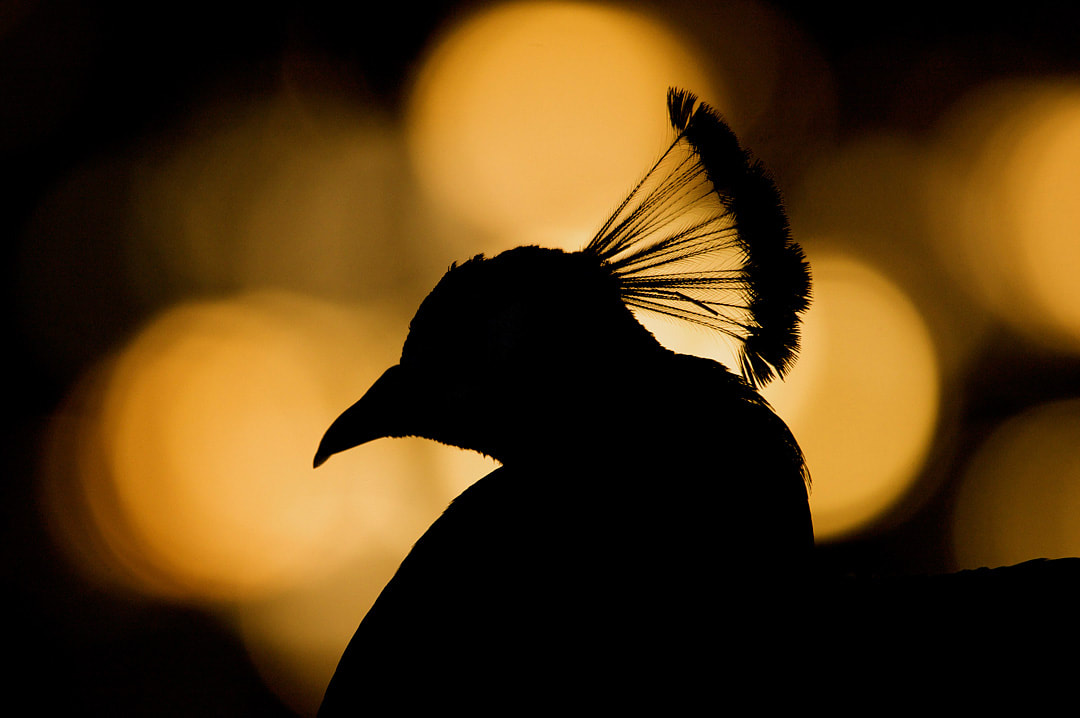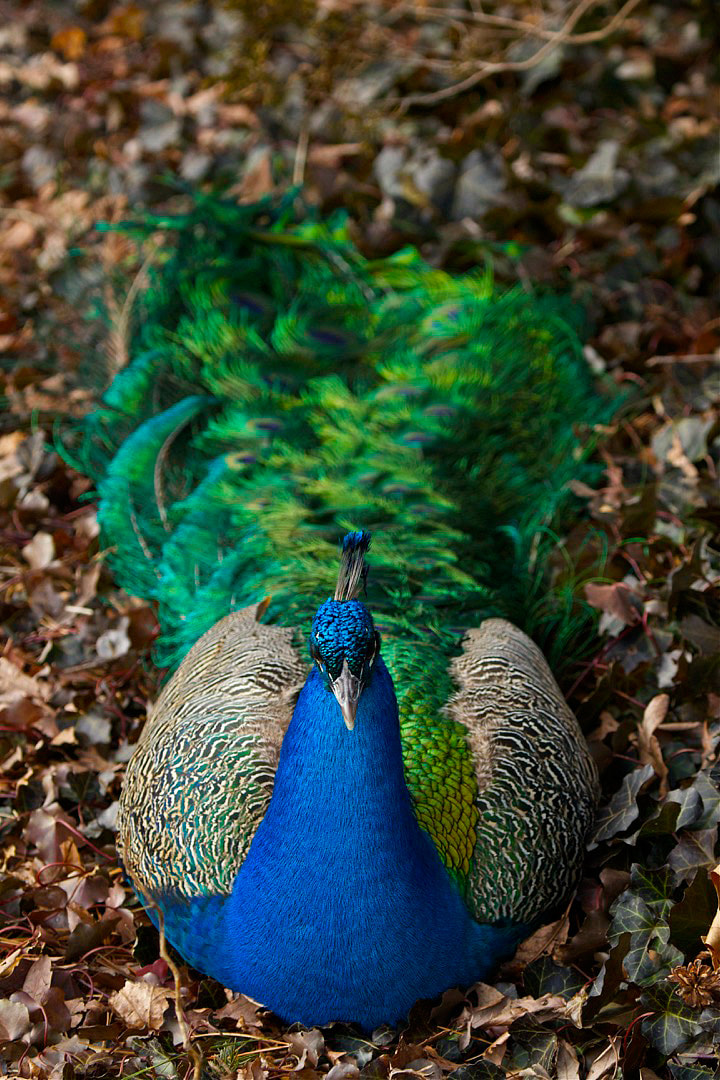Indian Blue Peafowl (Pavo cristatus)
|
Physical Description: Males, called peacocks, have iridescent royal blue plumage with a crest on the crown of the head. They have 1-5’ long tail covert feathers over their tail during the summer months. These decorative feathers are metallic green, ending in an iridescent eye spot of blue, green and bronze. Between 100-175 of these eye spots make up the male’s train, which he erects and spreads into an impressive fan to attract hens for breeding. The tail coverts are shed at the end of breeding season each year in late summer. Blue peafowl have black and white striped feathers on their shoulders (or all black if they are Black-Shouldered Peacocks), light brown flight feathers and gray tail feathers. The head is covered in tiny metallic feathers and the white skin above and under the eye gives a striped effect. They have brown eyes and their beak, legs and feet are a light gray.
Females, or peahens, are much plainer in colors of olive, gray and brown, with a white underside and green metallic feathers on the neck. These colors camouflage them better during incubation. They do not have the long covert feathers like the males. Peachicks are yellow and brown and resemble young turkeys. Habitat: They live in the open country bordering thick forest vegetation and streams, villages and on agricultural land. Range: They are native to Sri Lanka, Pakistan, and India, where they are the national bird. There are also feral and domestic populations throughout the world. Diet: Their diet consists of berries, fruits, grain and green crops, insects, small reptiles and mammals. Lifespan: Indian Blue Peafowl can live up to 30 years in human care. Social Structure: Males are territorial and defend a small area called a lek. Females may look over several males before choosing a mate. Peahens lay 3-12 eggs in a depression that they have scratched in the ground and hidden in vegetation. They will incubate their eggs for about 30 days and care for the chicks on their own. Peachicks can run and defend themselves almost immediately after hatching. By age 3, peacocks reach full plumage and are sexually mature. Peahens usually look for the male with the longest covert feathers and the greatest number of eye spots, or ocelli. These will increase as the male matures, up until he is about 12. Status: Least Concern1 Other: Indian Blue Peafowl have been residents of the zoo since it opened in 1922. They are the largest members of the pheasant family, weighing about 14 pounds. People of many different cultures have kept peafowl in captivity for centuries, and they even appear in ancient Roman, Egyptian and Greek history and mythology. In some cultures, the birds are considered sacred and are allowed to graze on food crops. 1 https://www.iucnredlist.org/species/22679435/92814454 |









